There is no more beautiful flower than a wild primrose – of that I am quite certain! This year they have been particularly good. They started in flower in the lanes very early in the year when the weather was miserable and everything else was dull and dismal, except for the fresh flowers of the primroses. And now as the greenery of Spring is really getting going the wild primroses are still in flower. In the garden the double primroses tend to start a little later than the wild primroses and as we move into April they are looking superb.
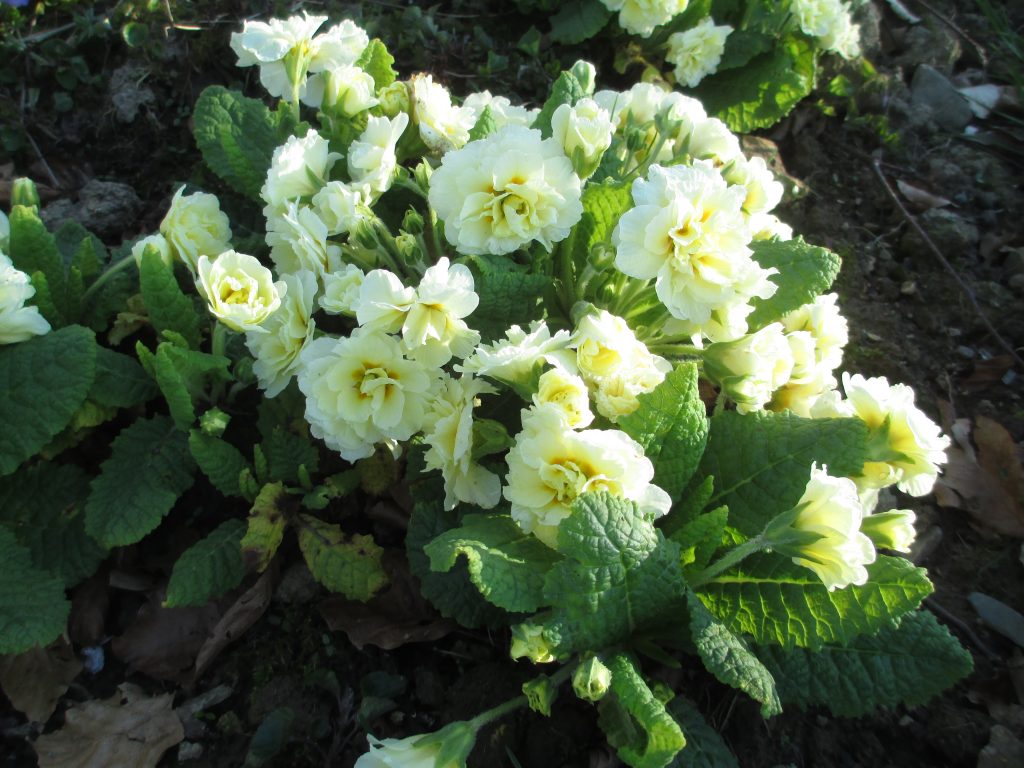
I have been finding myself thinking about which are the best and most reliable – but to be honest the list is long. It is key to have the right conditions, of course. They do need damp ground – no lack of that here! But with the right conditions they really are superb plants. ‘Marianne Davey’, an old Barnhaven variety is an extremely good plant with all the freshness of Spring.
For long flowering there are several excellent choices – ‘Sunshine Suzie’ who starts flowering in December and goes on and on. A really bright yellow flower that fades into tinges of apricot; she cheers up the Winter months.
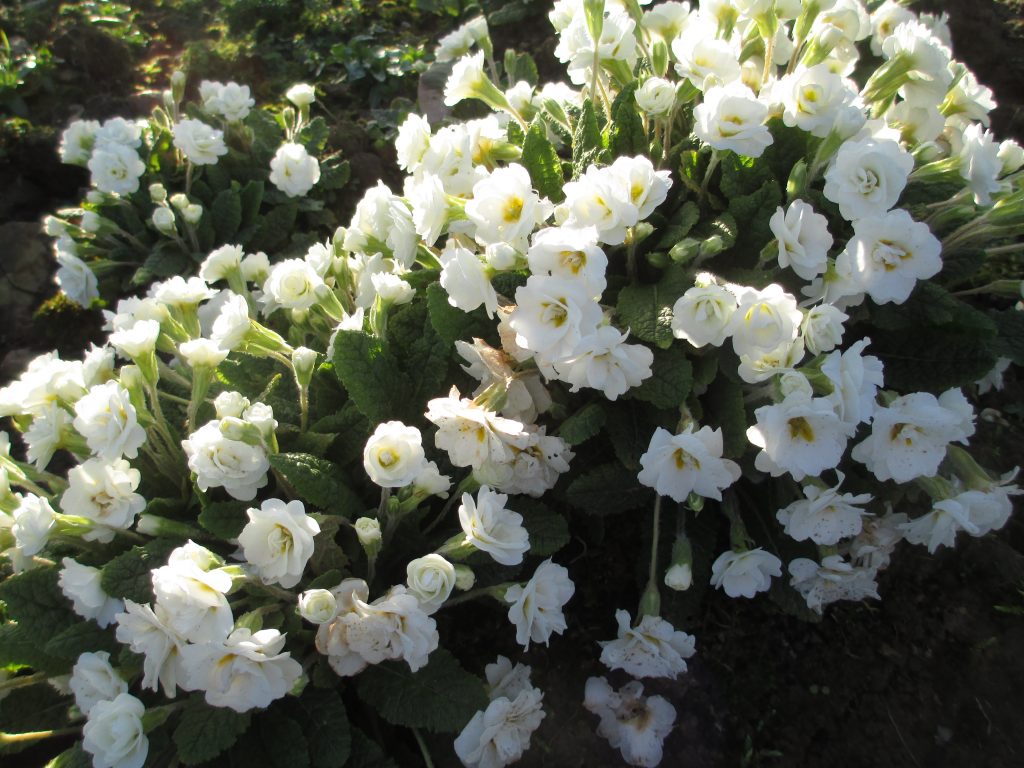
‘Petticoat’, a white double. The flower is smallish but she flowers and flowers. I have used ‘Petticoat’ this year to edge flower bed beside a path. The bed has a lot of the snowdrop ‘S. Arnott’ and I thought this would be a good addition.

Another long-flowering and beautiful double primrose is ‘Easter Bonnet’. Similar in shade to the very old and lovely ‘Quakers’ Bonnet’, this has far more flowers and keeps up its show for months on end.

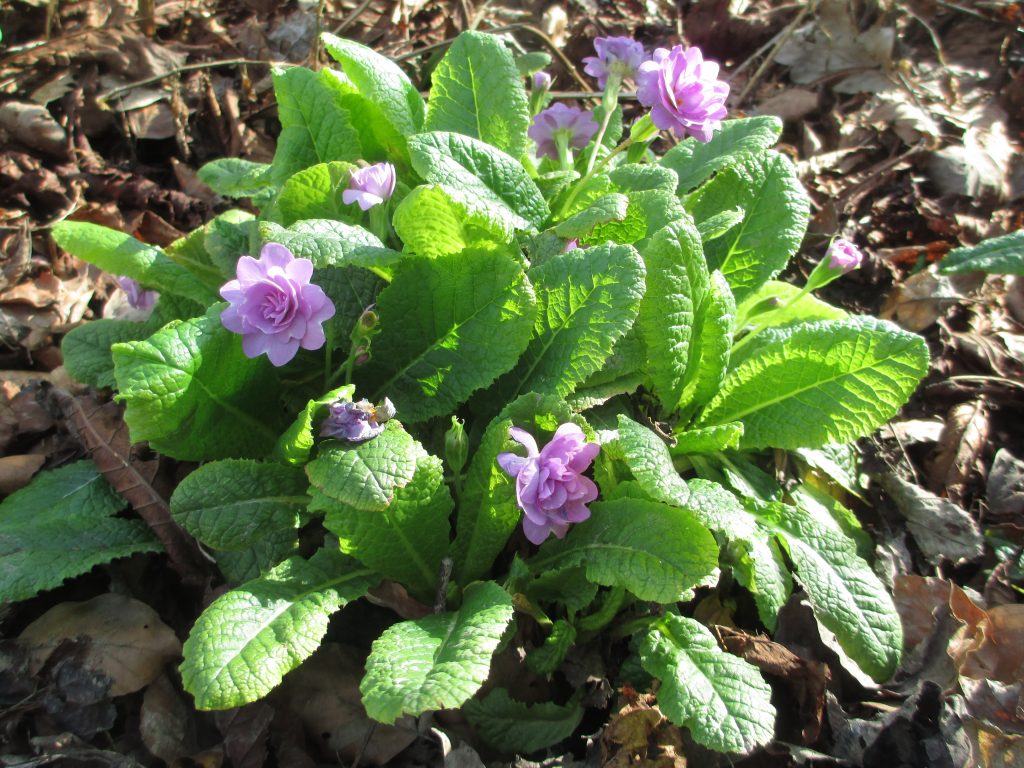

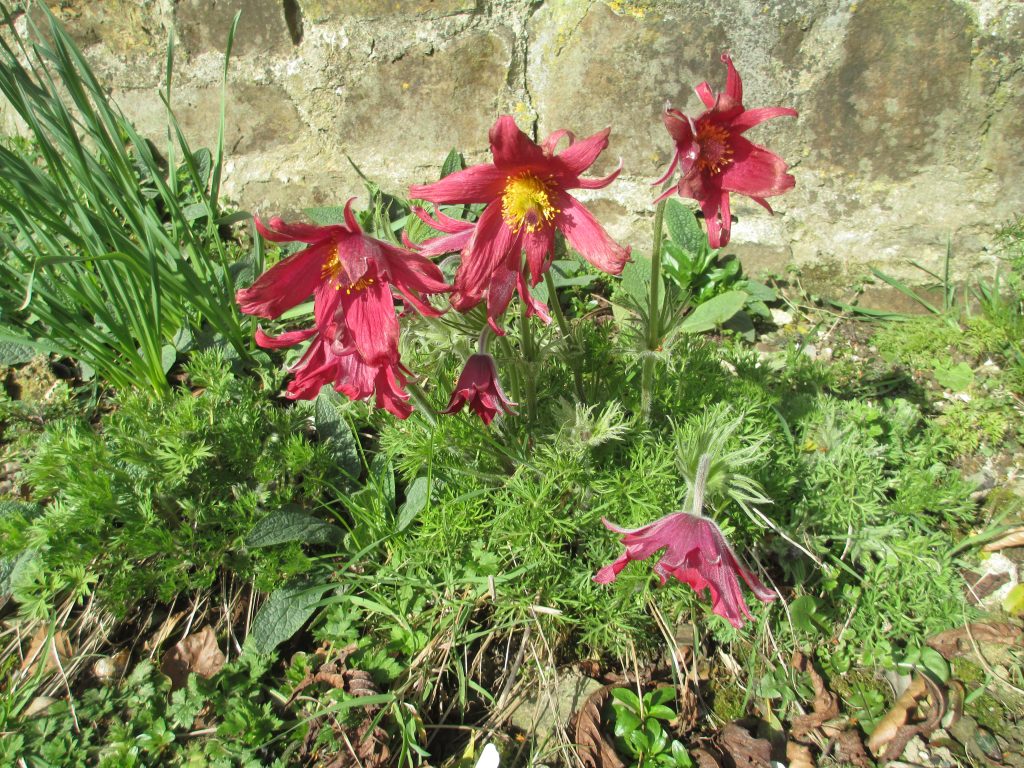
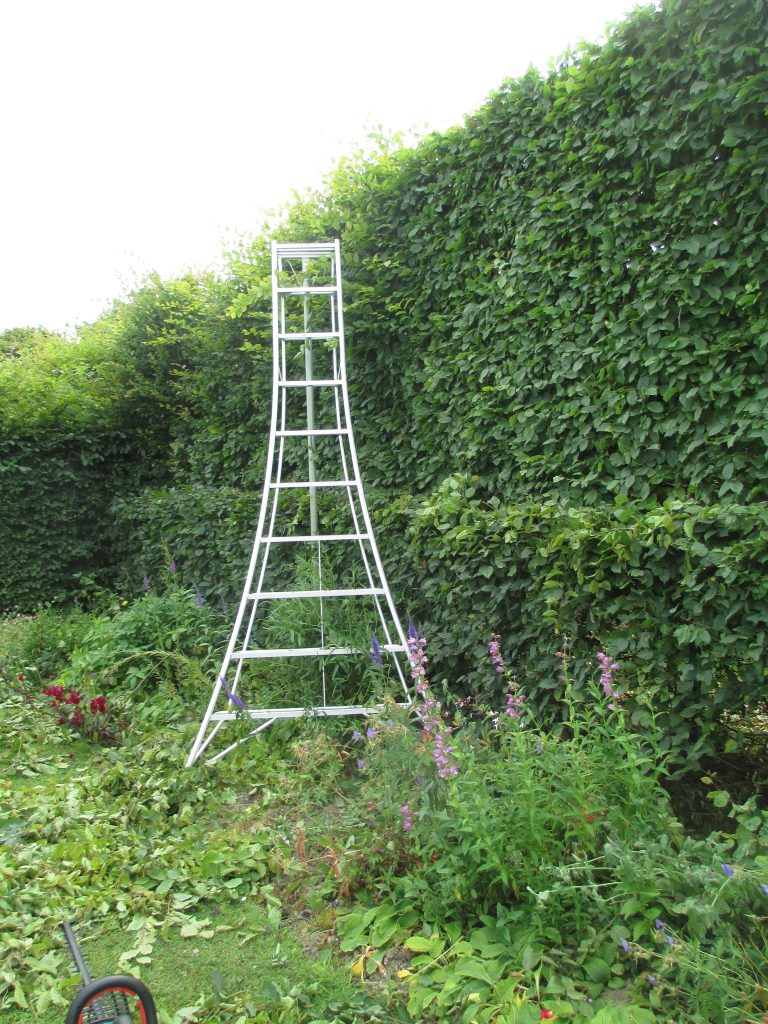
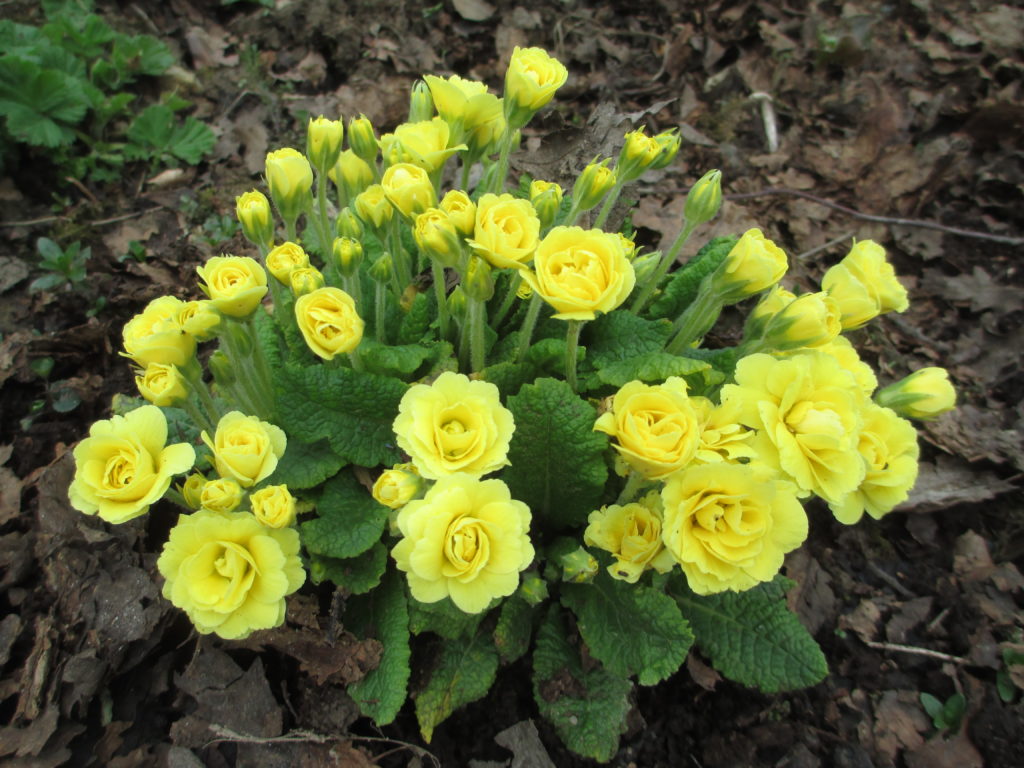

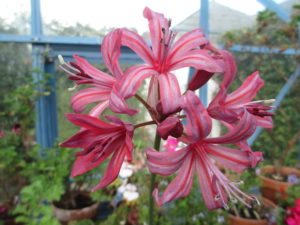 Nerines have been good in the greenhouse. I am building up some nice big pots of various sarniensis varieties. Even in late November there are some good flowers open. ‘Audrey Clarke’ is looking especially striking with four good flowering stems in one pot.
Nerines have been good in the greenhouse. I am building up some nice big pots of various sarniensis varieties. Even in late November there are some good flowers open. ‘Audrey Clarke’ is looking especially striking with four good flowering stems in one pot.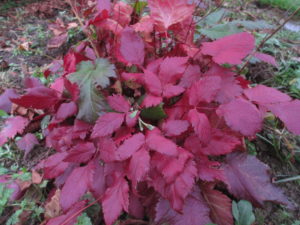

 Trying so hard this year to keep on top of annual weeds in the hope that I can reduce future crops! Maybe it will help, maybe it is wishful thinking. I think that there definitely is a correlation between how much work I have put in and how much more easy it is to do the work now. If I think back ten years when I was starting from scratch with a bare field used to cows, I know I don’t have the energy now to do the work I did then.
Trying so hard this year to keep on top of annual weeds in the hope that I can reduce future crops! Maybe it will help, maybe it is wishful thinking. I think that there definitely is a correlation between how much work I have put in and how much more easy it is to do the work now. If I think back ten years when I was starting from scratch with a bare field used to cows, I know I don’t have the energy now to do the work I did then.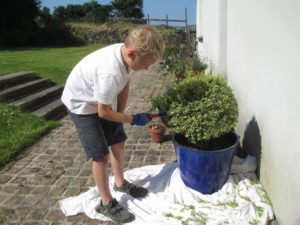 On the box front, Callum, my young neighbour comes to do some work in the garden most weeks. He is very good at trimming things – edges of flower beds, old leaves from phormium plants, that sort of thing. Recently I gave him a box ball to prune. His first effort ever to do this and he took to it like a duck to water. I foresee a future topiarist. Jake Hobson, look to your laurels! Unintentional pun there, sorry!
On the box front, Callum, my young neighbour comes to do some work in the garden most weeks. He is very good at trimming things – edges of flower beds, old leaves from phormium plants, that sort of thing. Recently I gave him a box ball to prune. His first effort ever to do this and he took to it like a duck to water. I foresee a future topiarist. Jake Hobson, look to your laurels! Unintentional pun there, sorry! It is certainly interesting to watch Callum at work. Children don’t have the worries we have when we get older – he sets to with gusto. I keep reminding him “think twice, cut once”, but actually he seems to have an instinctive feel for it. One day he will cut off a bit and wish he hadn’t, but so far so good! On the left you can see him next to the finished item on his first effort. Top marks!
It is certainly interesting to watch Callum at work. Children don’t have the worries we have when we get older – he sets to with gusto. I keep reminding him “think twice, cut once”, but actually he seems to have an instinctive feel for it. One day he will cut off a bit and wish he hadn’t, but so far so good! On the left you can see him next to the finished item on his first effort. Top marks!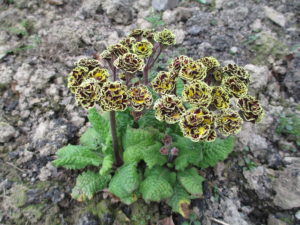 The primroses are nearly over now just a few late varieties in flower. This photo is of Primula ‘Tarragem Gilded Garnet’ bred by Dr Margaret Webster. The peonies are starting. Already the tenuifolia have flowered, and ‘Mai Fleuri’ an early flowering hybrid is in flower. Most wonderful of all the unpronounceable and unspellable species peony known to everyone by its nickname “Molly the witch” is in flower. It is such a fabulous pale yellow and looks so fresh. The early foliage of the herbaceous peonies has been wonderful. The emergent growth is often a glowing red or rich purple. Now the bushes have tight buds which I am watching with glee. It seems that most things are at least two weeks early this year, so I am busy planning visits to see other people’s peonies too now.
The primroses are nearly over now just a few late varieties in flower. This photo is of Primula ‘Tarragem Gilded Garnet’ bred by Dr Margaret Webster. The peonies are starting. Already the tenuifolia have flowered, and ‘Mai Fleuri’ an early flowering hybrid is in flower. Most wonderful of all the unpronounceable and unspellable species peony known to everyone by its nickname “Molly the witch” is in flower. It is such a fabulous pale yellow and looks so fresh. The early foliage of the herbaceous peonies has been wonderful. The emergent growth is often a glowing red or rich purple. Now the bushes have tight buds which I am watching with glee. It seems that most things are at least two weeks early this year, so I am busy planning visits to see other people’s peonies too now.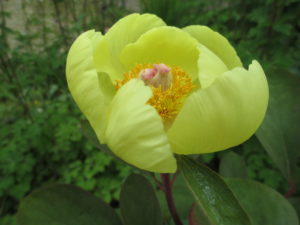
![IMG_5011[1]](https://glebegarden.co.uk/wp-content/uploads/2017/03/IMG_50111-e1489050767105-225x300.jpg) Spring started early this year with a lot of the double primroses coming into flower as early as February. At the same time the daffodils are took over from the snowdrops; under the pleached hornbeam Narcissus lobularis is thriving. They have been seeding themselves for several years and and really starting to look good. Annoyingly they are doing better on one side of the walk than the other so it is not as balanced as I would like but they are giving the splash of colour that lifts the spirits on gloomy North Cornwall early Spring days. I suspect that old varieties of daffodils will become a new interest for me. Already I seem to be getting quite a few!
Spring started early this year with a lot of the double primroses coming into flower as early as February. At the same time the daffodils are took over from the snowdrops; under the pleached hornbeam Narcissus lobularis is thriving. They have been seeding themselves for several years and and really starting to look good. Annoyingly they are doing better on one side of the walk than the other so it is not as balanced as I would like but they are giving the splash of colour that lifts the spirits on gloomy North Cornwall early Spring days. I suspect that old varieties of daffodils will become a new interest for me. Already I seem to be getting quite a few! 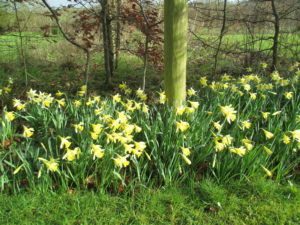 There are quite a few old varieties of daffodil growing on my hedge (Cornish hedge – a stone backed bank of earth). They seem to all be at least pre-1920 varieties although some I think it will be difficult to identify. Realising that set me off looking at other old varieties. So much fun to be had there I think! Like the primroses, it is lovely to have flowers that add colour to the early Spring.
There are quite a few old varieties of daffodil growing on my hedge (Cornish hedge – a stone backed bank of earth). They seem to all be at least pre-1920 varieties although some I think it will be difficult to identify. Realising that set me off looking at other old varieties. So much fun to be had there I think! Like the primroses, it is lovely to have flowers that add colour to the early Spring.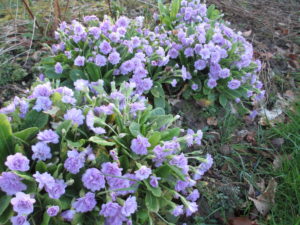
 Although it is the double primroses I collect I have quite a few single primroses and this year am pleased at how they have been developing into nice big clumps. They always look better like that. ‘Dark Rosaleen’ is one of Joe Kennedy’s breeding with the lovely dark leaves his plants often have. Such a distinctive and pretty flower.
Although it is the double primroses I collect I have quite a few single primroses and this year am pleased at how they have been developing into nice big clumps. They always look better like that. ‘Dark Rosaleen’ is one of Joe Kennedy’s breeding with the lovely dark leaves his plants often have. Such a distinctive and pretty flower.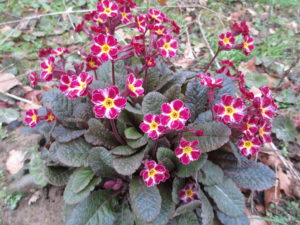
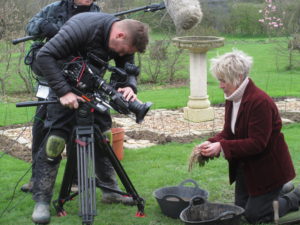
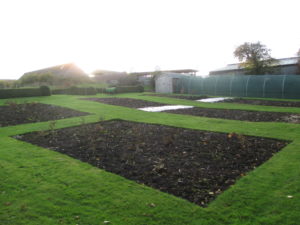 Well, close to seventy varieties planted in beds that are meant to be mirror images although the plants may have other ideas. The Lemoine Wittmanniana hybrids from 1907, which are very early flowering have been given their own area in the shrub walk. I am really looking forward to seeing them flower. The lactiflora peonies are rapidly taking over what was originally intended to be veg garden. Much more fun I think!
Well, close to seventy varieties planted in beds that are meant to be mirror images although the plants may have other ideas. The Lemoine Wittmanniana hybrids from 1907, which are very early flowering have been given their own area in the shrub walk. I am really looking forward to seeing them flower. The lactiflora peonies are rapidly taking over what was originally intended to be veg garden. Much more fun I think!